Rain on the roads? Our tips could help you loads
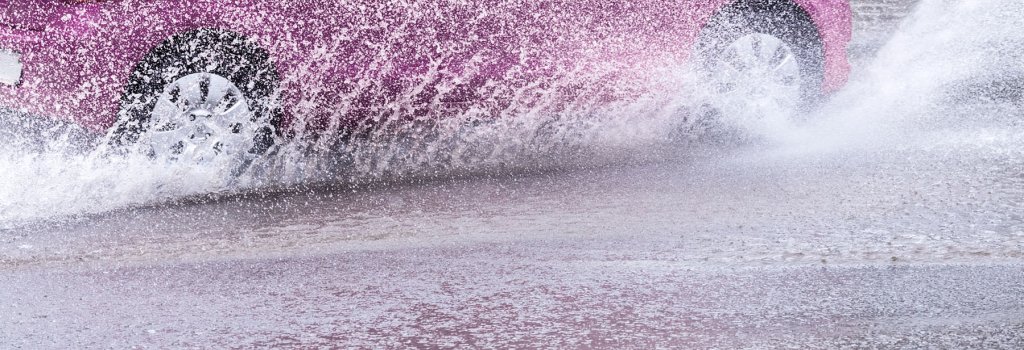
It's always best to plan ahead
3 things it’s well worth checking before you head anywhere – the weather, the traffic and alternative routes. After all, it’s best to be prepared. You might also want to sign up for alerts – the Met Office for weather warnings and the Environment Agency, Natural Resources Wales or Scottish Environment Protection Agency for flood warnings.
Check your wiper blades are in tip-top condition
Dirty and worn windscreen wipers won’t do the job they’re meant to if it’s raining heavily. If in doubt, get a new set as you’ll need to see as much as you can when it’s pouring.
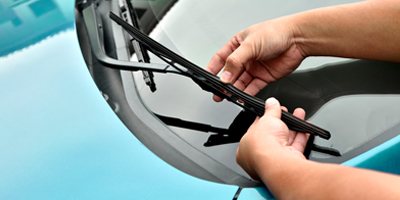
Make a conscious effort to drive slower
The moment your visibilty’s affected you should drive a lot slower. That way, you’ll feel more in control and potential hazards should be easier to spot.
Got bald or bare tyres? Get them changed asap
If you don’t have enough tread, you’ll have less grip and could end up ‘aquaplaning’ (you’ll find more details below). So have a close look at all your tyres (many vehicle manufacturers recommend tread depth should be at least 3mm – the legal minimum tread is 1.6mm) and make sure the pressures are right before you set off if heavy rain’s due. The best way to check tyre depths? Go here.
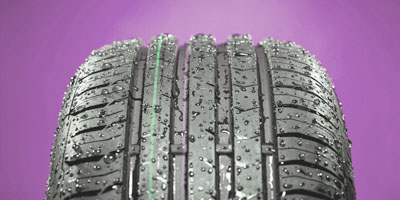
If you spot standing water try to avoid it
If there’s floodwater in the road, be careful. You definitely shouldn’t drive through it if it’s moving, or if it looks as though it might be too deep to drive through, as you might lose control of your car or hit something (like a hidden kerb). Flooding the engine is always a possiblity too – and you really don’t want to do that as it can be an expensive fix.
For anyone who needs ‘aquaplaning’ explaining…
It’s when your car tyres ‘ride’ on a layer of water because they can’t get rid of it quick enough to grip. If this ever happens and you struggle to control the steering, please try and stay calm, take your foot off the accelerator and steer in a straight line until your tyres grip the road again.
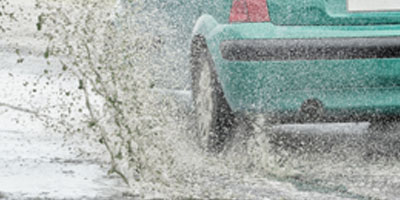
The bigger the gap from the car in front the better
As it takes longer to stop in the wet, make a point of doubling the distance you’d usually leave between you and the car in front (from 2 to 4 seconds). For example, time from when the car in front passes a lampost – saying “1 Sheilas’ Wheels” takes about 1 second.
Dipped headlights are a bright idea
Always use dipped headlights when visibility’s poor (less than 100m according to the Highway Code) as they don’t give off as much glare as fog lights and full beams.

Test your brakes after driving through the wet stuff
If you need to brake suddenly and your brakes are already wet they’ll be less responsive – which could be dangerous. After driving through water, simply test your brakes gently (this will also help dry them), but only when it’s safe to do so.
If you’re insured with us, our friendly Claims Team is here to help
For claims and 24-hour accident support please call us on 0345 604 3570. For accidents involving only your car – you can make a claim quickly and easily 24/7 in My Account.
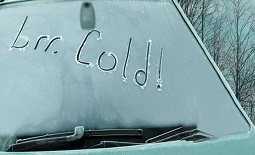
If there’s ice and snow, here’s what’s handy to know
Check your routes ✔ Check the weather ✔ Check your car ✔

If it’s freezing, stay as snug as a bug in a rug
Imagine your boiler breaking down mid-winter. Not a nice prospect when it’s -3°C.
